George Lucas wanted a car that would evoke circa 1962 memories of the cruising he experienced growing up near Modesto. He and movie producer Gary Kurtz whittled a list of potential car candidates down to a red, full-fendered coupe, finally basing their selection on its chopped top. |
     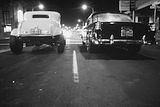 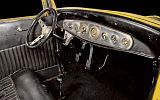 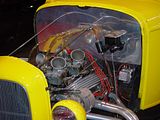 |
American Graffiti CoupeThe Fastest Thing In The Valley Also Happens To Be Among Rodding's Biggest Icon. The most recognizable hot rod in the world has never won a major show award, nor has it set any top speed records on the dry lakes or at the asphalt drags. In fact, the most recognizable hot rod in the world wasn't constructed by a big-name builder, and the sum of the car's parts is similar to the buildsheet you'd typically find on any nondescript backyard hot rod. Even so, the most recognizable hot rod in the world is just that. You may know it as the American Graffiti coupe. Often, when someone makes reference to this '32 five-window, a wave of nostalgia washes over them, too, because the American Graffiti coupe owes its very existence to the George Lucas movie American Graffiti that played on high school memories from the '50s and early '60s. In truth, the bright yellow Ford originally was built as just another prop for the 1973 cult film. It wasn't supposed to be a marquee star, but as the movie's popularity grew, so too did that of the coupe. Eventually, thanks in large part to the automotive press as much as any other factor, the car became known as the American Graffiti coupe, and now people associate it with the cool character who drove it in the movie, John Milner, portrayed by actor Paul LeMat. Indeed, LeMat--aka, John Milner--and the coupe share paralleled popularity among American Graffiti fans, until you can hardly differentiate one without the other. Which is fitting, because when I caught up with the American Graffiti coupe at the Viva Las Vegas Car Show during the spring of 2000, LeMat happened to be present and accounted for, as well. This was one of many car shows and events that the duo, along with the coupe's owner Rick Figari, have attended in recent years. Because the movie focused so heavily on the street scene of the early '60s, it was essential that the cars driven in the film by the teenage characters should boast the same cool looks typically associated with hot rods and tail-draggers of the era. Lucas himself, who as a teenager lived in the central valley area where the movie's drama takes place, was instrumental in the famous coupe's genesis as a hot rod. Apparently he and movie producer Gary Kurtz whittled a list of potential car candidates down to the coupe, finally basing their selection on the coupe's chopped top. Henry Travers, the film's transportation manager, was then given the enviable task of overseeing the car's construction into a bona fide hot rod. Practically all of the filming took place in Northern California, so logic dictated selecting a shop in the area for the actual rebuild of the car, which was intact physically, but in need of fit and finish, and mechanical fixing to make it run. So Travers trailered the car north to Bob Hamilton's shop in Ignacio for the conversion. Lucas wanted a highboy with bobbed rear fenders to emphasize the fender laws that hot rodders continually confronted 40 years ago. Additional re-construction included addition of motorcycle front fenders and aluminum headlight stanchions, and chrome plating for the dropped I-beam solid axle. The Deuce grille and shell were sectioned a few inches, and then the car was put back on the trailer and taken to Orlandi's body shop in nearby San Rafael for its coat of Canary Yellow lacquer paint. The interior--originally red and white tuck 'n' roll Naugahyde--was dyed black. To maintain the persona of a bad-boy hot rod, Lucas and Kurtz stipulated that the engine should be loud and ragged-looking. Starting with a mid-'60s Chevrolet 327 small-block, Johnny Franklin's shop filled the bill using some interesting components. The four-pot intake manifold is a rather rare Man-A-Fre that holds a quartet of Rochester 2G two-barrel carbs, and a pair of finned no-name valve covers were set atop the camel-hump cylinder heads. It's been reported, too, that Lucas defined how the exhaust headers should look, stipulating a pair of Sprint race car-style pipes to emphasize the car's bold appearance. The remainder of the drivetrain included a Super T-10 four-speed transmission and a set of 4.11:1 gears in the '57 Chevrolet rearend. Then it was off to the film location where Paul LeMat, in the guise of John Milner, went about making hot rod history on the big screen. Special removable platforms were engineered and fitted to the framerails for camera crew members to ride during the close-up filming for the street cruising scenes in Petaluma, California. Those scenes allowed for close-ups of McKenzie Phillips, who portrayed the prissy young girl that Milner was stuck "babysitting" through the movie's entirety, and LeMat, as they sat in the cab. The film's climax, of course, is the famous drag race scene near the end of the movie. In that scene Milner squares off against the bad-to-the-bone black '55 Chevrolet driven by street racer Bob Falfa, portrayed by Harrison Ford. A piece of movie trivia here: LeMat didn't drive the car down Paradise Road for the film's race sequence. Instead, Henry Travers was at the wheel, and the film crew had a very brief window period--about 10 minutes--to do the actual filming in order to maintain the same sunrise lighting throughout the scene. Travers obviously got it right, and the scene went smoothly, although the '55 refused to roll over for the grand finale crash, so the film crew had to physically roll the car on its side for the shot! As for the coupe's future, when the film was put in the can and presented to Universal Studios for distribution, it's felt that fate intervened to save the car for posterity. According to legend, Universal's marketing team concluded early that American Graffiti would be a financial flop, and to recoup their projected loses they ordered Travers to sell the Deuce coupe immediately. The asking price was $1,500, but there were no takers. Good thing for Universal's promotion department, because when the movie was released it proved an instant hit, prompting the ever-resourceful marketing department to bring the '32 five-window back home, to be used as a promotional tool. As sequels usually go, More American Graffiti was a flop (once again the marketing gurus got it wrong!), so Universal felt it was time to retire the old warhorse once and for all. The occasion was highlighted by a sealed-bid auction, won by Steve Fitch who had previously acquired rights to the movie's black '55 Chevy. A couple years later, after persistent offers by a young die-hard American Graffiti fan named Rick Figari, the car changed owners again. It turns out that ever since Figari as a boy of eight-years-old saw the movie, he had been infatuated with the coupe. When Fitch made it available for sale in 1985, the young man from San Francisco, California, had the dough. Figari was only 20 years old at the time, and his acquisition probably assured that the coupe would be preserved as the American Graffiti coupe for years to come. Among the first orders of business was to contract Roy Brizio's shop in South San Francisco to make the car roadworthy again. Indeed, Figari spent the next few years actually driving the car, and it became a fixture in the Bay Area street rod scene. That is, until Figari, who owns and operates his own saloon in the city, concluded that the car's special historical and financial significance justified it as more than just a daily driver. And so, once again, the American Graffiti coupe was parked, this time in honor of its heritage. The car currently is available for display at car shows and events across the nation. Figari maintains a website in its honor--www.milnerscoupe.com--and the car now is officially known as the Milner coupe. But everybody who is familiar with this bright yellow five-window highboy knows it as the American Graffiti coupe. After all, this is the hot rod that many of today's street rod enthusiasts cut their teeth on. Just ask Rick Figari, the owner of the most recognizable hot rod on the planet. |
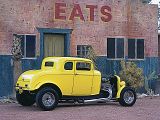 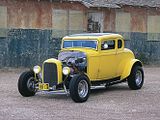 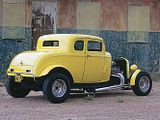 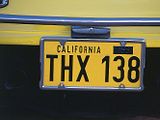 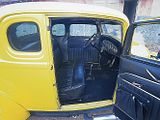 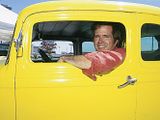 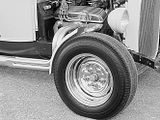 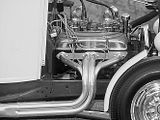 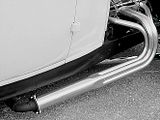 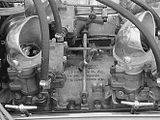 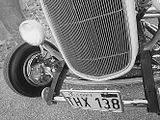 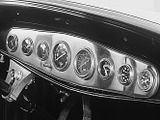 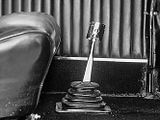 |
Greg Wapling
Chev 34 |
51 Pickup |
Business Directory |
Photo Gallery |
Readers Rides |
Under Construction |
Virtual Body Shop
American Chopper |
American Hot Rod |
Horsepower TV |
Hot Rod TV |
Monster Garage |
Overhaulin |
Rides |
Wheels TV |
Wrecks to Riches
Queensland |
New South Wales |
Victoria |
Tasmania |
South Australia |
Northern Territory |
Western Australia |
New Zealand



